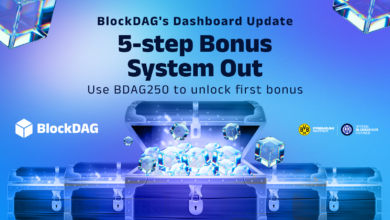
Exploring the Criticisms and Strengths of the Solana Blockchain
In a recent discussion on the platform X, Justin Bons, the Founder and Chief Investment Officer of Cyber Capital—hailed as Europe’s pioneering cryptocurrency fund—offered a comprehensive critique of the Solana blockchain. Bons highlighted several perceived shortcomings in Solana, such as frequent network disruptions, centralization concerns due to high hardware requirements, and a non-deterministic model that he believes compromises reliability in favor of speed.
Examining Solana’s Challenges and Leadership in Blockchain Technology
While acknowledging the progress Solana has made over time, especially in reducing network outages, Bons emphasized that blockchains should ideally never experience downtime, even during their experimental phases. He pointed out ongoing issues such as significant congestion events triggered by network scheduling bugs and challenges with the QUIC protocol. Additionally, he noted that problems like sandwiching and Maximal Extractable Value (MEV) remain pervasive across the industry.
Hardware Demands and Economic Barriers
Bons criticized Solana’s high hardware demands, particularly the need for substantial RAM, stating, “The largest hardware expense is RAM, requiring 256GB of EC memory, which costs thousands of dollars.” He noted that these expenses, combined with the high cost of staking, create barriers, but also acknowledged that Solana maintains over 1,400 validators.
Concerns About Solana’s Fee Market and Design
He expressed concerns over what he terms a “broken local fee market,” which he believes leads to a diminished user experience. However, Bons remains hopeful that these challenges will be addressed within the year. Regarding Solana’s non-deterministic design, he argued that it results in a “less than 1% chance of transaction failure,” which he labeled as both a structural inefficiency and a waste. Furthermore, Bons questioned the Solana Foundation’s ongoing sponsorship of validators, suggesting that while it was crucial during Solana’s growth phase, “the time has come for Solana to operate independently.”
A Shift in Perspective: From Critic to Supporter
Despite his criticisms, Bons revealed that he now supports Solana, asserting, “SOL is a permissionless and sufficiently decentralized blockchain… BTC and ETH cannot provide this service at scale. That is why SOL is outpacing them while preserving the cypherpunk ethos.”
Community Response to the Critique
In response to Bons’ remarks, João Mendonça, a developer within the Solana community, acknowledged Solana’s relentless pursuit of performance, which at times results in near-critical challenges. Mendonça remarked, “Solana is pushing every limit known to this industry… it maintains over 99.9% uptime with more than a year of uninterrupted block production.”
Debating Decentralization and Technical Flexibility
Mendonça addressed concerns about perceived centralization, emphasizing that high hardware requirements do not necessarily hinder users from running nodes for verifiability. He explained that node configurations can be adjusted to more modest requirements for those tracking the chain, thus lowering participation barriers. He added that similar incentive programs, like Solana’s Foundation-funded sponsorship, are common across major blockchains to bolster validator networks. The Solana Foundation Delegation Program (SFDP) has already reduced its share from around 20% to about 12% of total stake.
The Future of Solana’s Network Reliability
Bons reiterated the importance of reducing network downtime and expressed skepticism about Solana’s non-deterministic approach, arguing that it results in an “optimistic model rather than a deterministic one,” thereby affecting transaction reliability. Mendonça countered this by suggesting that Solana’s design prioritizes user speed over developer convenience, and halting the system prevents potential state corruption during significant issues until multiple clients can secure network redundancy.
At the time of reporting, Solana (SOL) was trading at $192.
“`







